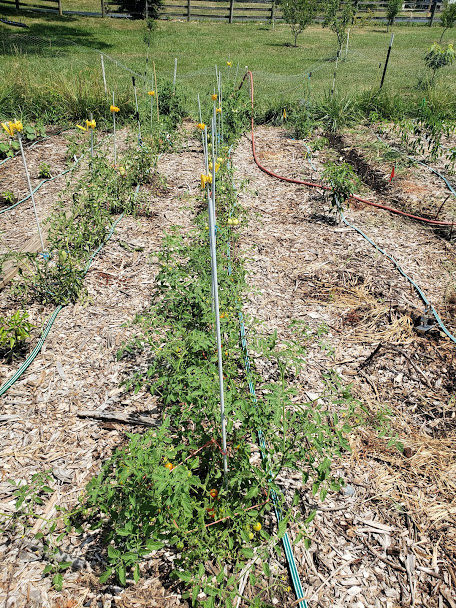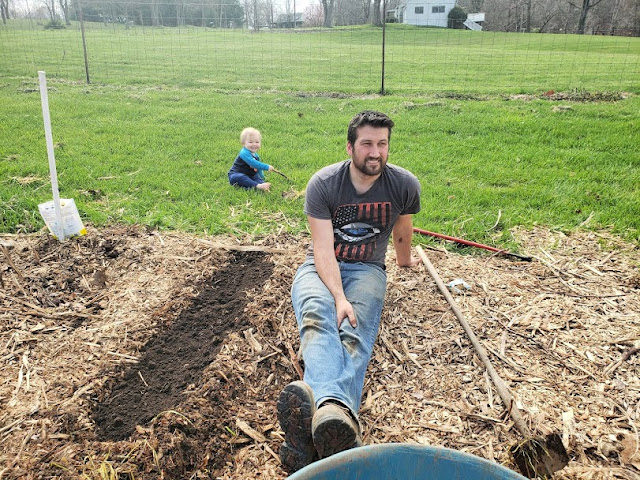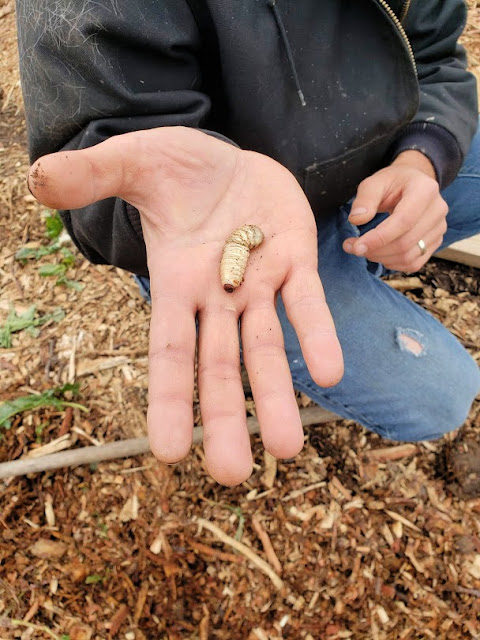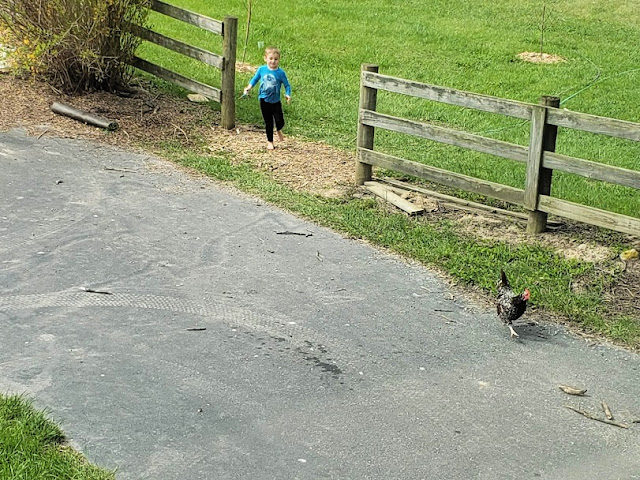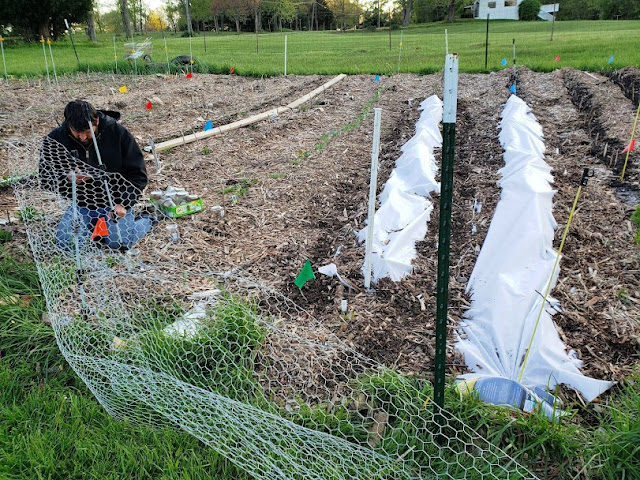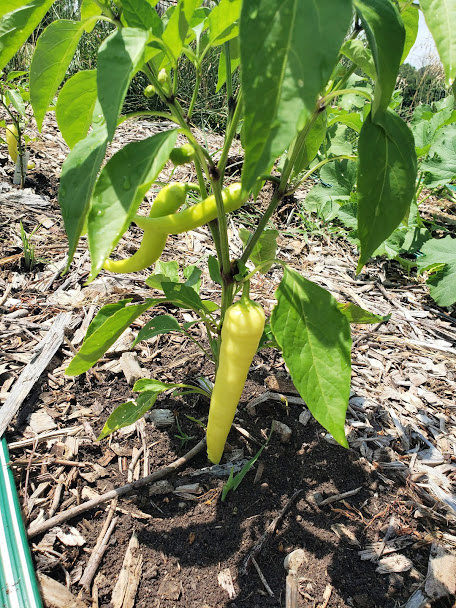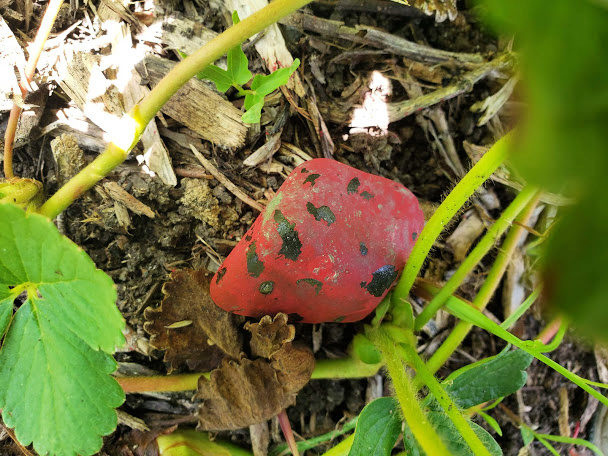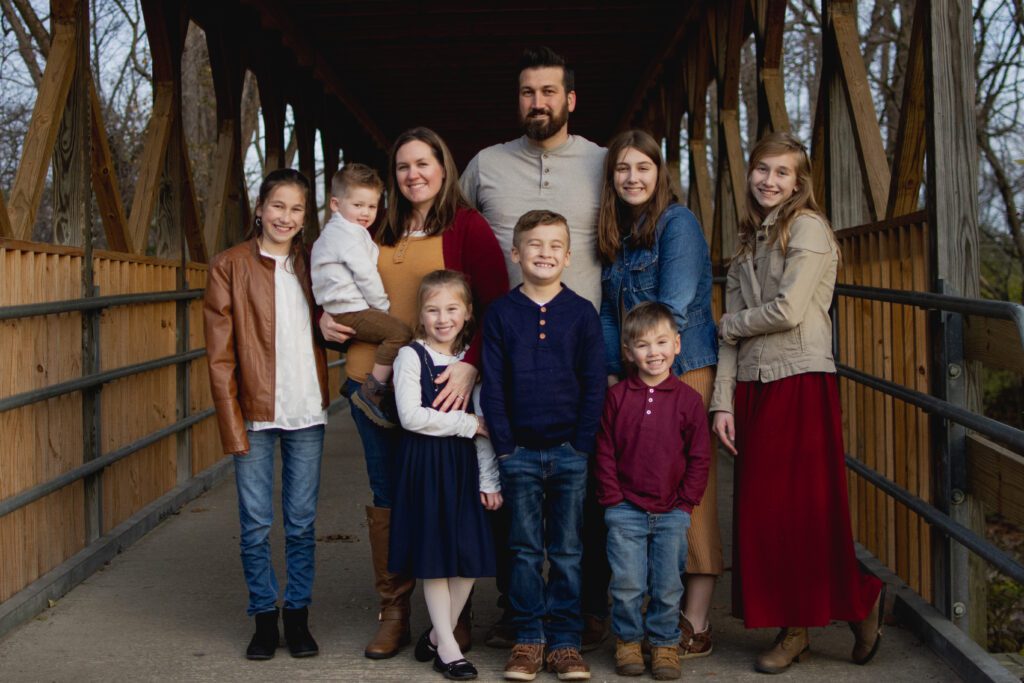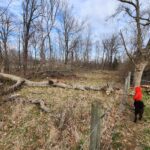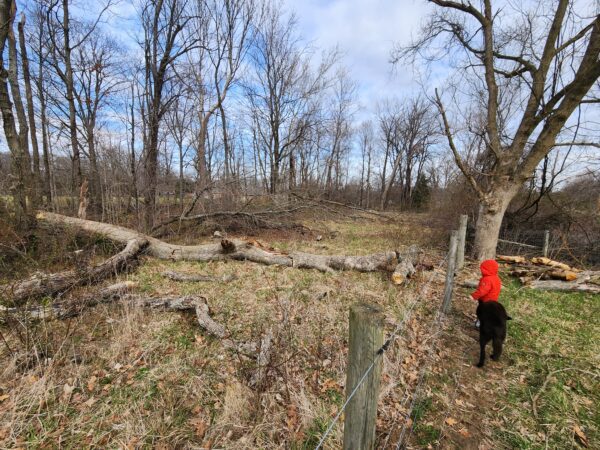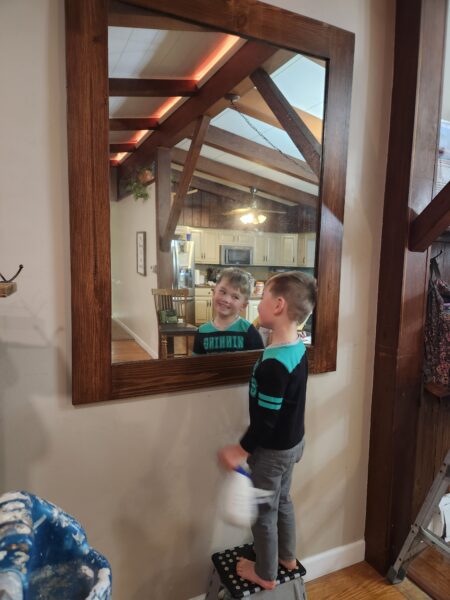One of the yearly goals we’ve been able to check off every year since moving to Indiana has been to put in a garden. It hasn’t always been pretty–the weeds, insects, clay soil, and intense heat or lack of rain has kept us from ever feeling like I’ve been truly successful. Yeah, I’m always surprised how well the garden can do without much help from me (I’m the animal person, Jack’s the plant guy) but this year has definitely been different.
 |
| My favorite kind of reusing: functional recycling. Egg cartons into seed sprouters. |
It’s usually about February that I start going a bit stir crazy, wanting to get outside, get my hands in the soil, and see something green and growing. Obviously, that doesn’t exactly work–plants aren’t growing for a reason when it gets to freezing every night. Plus, this past February was…, in a word, crappy. Between my car accident, illnesses, travel, and the start of covid-19, there wasn’t exactly time to go to the nursery and horde plants that would probably die on the top of my piano before it warmed up enough for us to be able to plant them.
Instead of going full speed ahead, we took it slow. The girls and Jack started some cold-hardy seedlings like lettuce, and for a while, that was our garden until the chickens discovered it on the front step and scratched it to pieces before nibbling up all the tiny, tender, probably delicious veggies. Seriously. Chickens sometimes.
Sometimes when Jack sits down to watch television, he turns on YouTube, not to watch the dumb stuff people post but to learn. One concept he studied up on was about gardening with mulch (look up Back to Eden Gardening). Basically, it’s using mulch and decomposing green matter to amend the soil, keep moisture in, and smother weeds–all things we need desperately in our neck of the woods.
We managed to get three good-sized loads of mulch from Chipdrop, which gave us plenty to cover the garden area we tackled this year. Last year, our kindly neighbor tilled up a much larger plot but it did little to help our garden grow better. There were still a lot of weeds, standing water, hard clay…just in a larger area. So this year, we focused on getting the whole garden area covered with cardboard to smother out any of the weeds still hanging in there, then brought over bucketfuls of rich, dark soil from behind the barn. The former owner ran probably more cattle than the land could handle, but that means some areas are super fertile. Perfect for the garden.
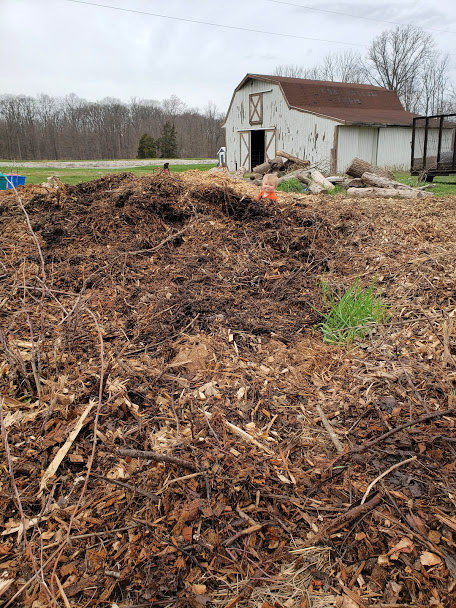 |
| I spy Peter! |
As much as we were determined to get our garden just right, it was an incredible amount of work, even with all hands on deck. The mulch was dropped off at one end of our property where we had the space and access for the trucks, the garden was on the other side, which meant we had to fill up our trailer and drive it over. If our old tractor felt like running, it was helpful in getting things moved around. If not, that meant the only way it was getting done was with a pitchfork and some old fashioned sweat.
Or child labor. But it’s not really wrong if they want to do it, is it? 😋
Eventually, we got a little smarter (or maybe lazier) and figured out ways to do things a tad easier. Someday, we’d love to have more machines around here to make the jobs less back-breaking but for now, we use what we have. Guess what? The lawn mower can carry a couple buckets of rich soil to the garden a lot faster than I can, especially if we have extra family here to help.
One of the indicators of soil health is definitely the number of earthworms that can be found, and the decomposing mulch brought them out in droves. The downside is it’s also a perfect place for pesky insects to make a nursery for their uber-disgusting babies to lie in wait for some juicy garden plants. If we ever find a grub in the garden, it goes straight to the chickens. To them, it might as well be a king-sized candy bar.
Ironically, there’s even a downside to the mulch, the pests, and the chickens knowing where they are. We let our chickens free-range during the day and for some reason, they’re not satisfied with the acres and acres we have out back and always end up in the front yard. It didn’t take them long to discover that the garden is basically heaven and in all their joyous digging, they inevitably end up killing plants and disrupting rows. To counteract their selfish small-mindedness, I quickly slapped up some chicken wire, which wouldn’t keep chickens from predators but definitely deters chickens. So far, so good, although we have one particularly persistent hen that requires a child to go out and shoo her away (I’m looking at you, Leafy).
We’ve been getting better at taking it all in stride and sometimes, we can even anticipate the trouble we might have based on previous experience. Once the weather warmed up, we passed the frost date for our area, and the orchard started to blossom, we put in our order at our favorite nursery and began planting.
Mother Nature is a fickle parent. A week after our last frost date, a nasty cold streak rolled through the area. The days were balmy enough but a couple of the nights got below freezing long enough that it threatened to kill anything that wasn’t warmblooded. We scrambled to cover the garden with frost blankets, piled on the mulch, and prayed everything would pull through.
 |
| Sad tomato. |
The garden…didn’t do so well. Some things seemed fairly unaffected. The strawberries, raspberries, potatoes, cabbages, and Brussels sprouts didn’t seem to care but everything else sure did. The tomatoes were wiped out, the peppers crumpled from the freeze, and the first year we were going to get a decent crop of peaches and cherries, almost all disappeared overnight. I wouldn’t consider myself particularly pessimistic but seeing the garden in such a pathetic state after all our hard work was heartbreaking.
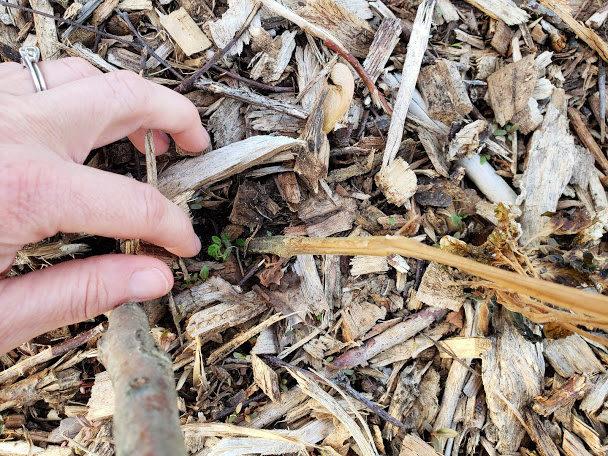 |
| Well, looky there. The Cherokee purple tomato making a comeback. |
I let myself mope about it for a few days. I mean, it wasn’t like there was much of anything to do in the garden with everything so dead. Part of the frustration was that due to Covid-19, everybody and their dog decided to do a garden this year. I’m all for people being self-sufficient but between people hoarding vegetable plants, Covid, the late freeze, and the nursery’s inability to anticipate their demand, when we went back to get replacement veggies, there was almost no selection and anything there was teensy tiny since they’d been scrambling to catch up with demand. I decided I could play the hoarding game too and bought twice as many tomatoes as I probably needed in half a dozen different varieties, figuring if half of them died because they were so weak and helpless, I’d still get some tomatoes this year.
From this year’s garden, I’ve been reminded that sometimes, when Heavenly Father wants to teach me a lesson, He first has to create the experience where the miracle can occur. Not long after I replanted the tomatoes, Jack discovered that most of the tomatoes that looked dead in fact, weren’t. They had established strong enough roots that they were able to grow a new top again when the cold had passed. Between the new tomatoes and the first planting, we have upwards of 25+ tomato plants in about seven different varieties. One thing is for sure–we’re definitely getting a bumper crop of vegetables this year.
It’s so satisfying to go out to the garden this year. This is the first year we’ve been successful with lots of different crops. The onions are growing bigger than what I buy in the grocery store…
…the cabbages are on track to be the size of Peter by the time we harvest them…
…there are peppers on each of the plants, and the cantaloupe, green beans, watermelon, cucumbers, sweet corn, squash, and pumpkins all look beyond promising.
Even in our success, it’s not without the occasional hiccup still. Zucchini is one of my go-tos because it’s a crop I know I can grow (and turn into zucchini bread or a healthy, one-pan dinner) but so far this year, it’s been slightly disastrous. One of Indiana’s infamous moles tunneled it’s way under the whole row of zucchinis right as they were starting to produce and without roots, they’ve already got one foot in the grave. I’ve replanted but it’ll be at least another month or so before we see vegetable. At the same time, it really isn’t so bad. Sure, I would have liked the mole not to have destroyed part of my garden but also, I can go to the grocery store and buy inexpensive zucchini. It’s not 1839 and we’re not going to starve over winter because the garden didn’t do well. It’s all good.
Part of what I enjoy about the garden is that it’s a family endeavor, and the ways the kids contribute are actually helpful. We go out most mornings to make sure the weeds are in check, they’ve harvested the few veggies and fruits we’ve gotten so far, and they help with pests. They’ll pick Japanese beetles off or fill jars with slugs. Their favorite is painting fake strawberry rocks to fool birds and hide them among the strawberries.
Seems to be working pretty darn well.
There are still weeds. There are still bugs eating holes in everything. There’s still the need to water and some of the garden plot still hasn’t been tamed but as a whole, it’s so, soooo much better than it’s ever been. There’s sweet corn, onions, green onions, strawberries, raspberries, cabbage, Brussels sprouts, potatoes, tomatoes, bell peppers, hot peppers, snackable peppers, watermelon, cucumbers, sunflowers, spinach, cantaloupe, pumpkins, green beans…and that’s not even the peaches, pears, apples, cherries, and pawpaws in the orchard, or the elderberries, plums, mulberries, and black raspberries that grow without much help from us. Come August, we’ll be up to our eyes in produce and for once, I may actually be able to say our garden was a success.
